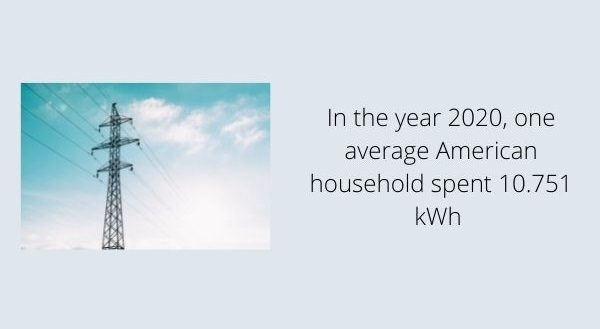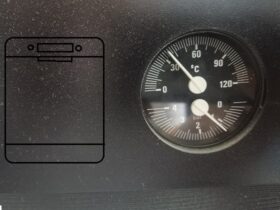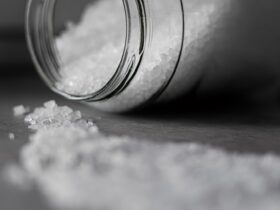It’s easy to think that dishwashers aren’t energy efficient since they use both electricity and water to clean dishes, unlike the traditional hand washing dishes method. It’s always best to put things into an objective perspective and do the math of how much electricity a dishwasher use to make the verdict of how you’ll wash dishes from now on.
IN THIS ARTICLE:
How Much Electricity Does An Average American Household Spend?
According to the energy information administration, the average American household spent 10.715 kWh in the year 2020 which would average 893 kWh in a single month.


How Much Of That Do Dishwashers Use?
This will depend on your dishwasher, how much energy it spends, and how much you use it. On average, the dishwashers spend 1.6 kWh per hour running. The average cycle is 2 hours and if you run it every day for 2 hours, your dishwasher would account for 1.168 kWh of yearly energy use. That would account for 10.9% of your yearly energy expenditure for the whole household. However, it’s just in case you use a 2-hour cycle. With a 1-hour or even 30-minute cycle, the dishwasher spends only around 2%.
Other Appliance Electricity Use
On average, this is how much energy your other appliances account for in your yearly electricity expenditure. You’ll notice that cooling and heating spend the most.


How Much Does It Cost To Run A Dishwasher?
Average Cycle Time: 2 Hours
Average Energy Expenditure: 1.8 kWh, 3.6 kWh per cycle
Average National Energy Cost Per kWh: 10.42 cents
Let’s set the scene. If you used your dishwasher daily for the duration of the average cycle time and with the average national cost, this is how much you’d have to pay for electricity:
Daily Cost: 37.51 cents
Monthly Cost: 1 125 dollars
Yearly Cost: 13 503,6 dollars
Note: Prices vary greatly from state to state
How To Achieve Energy Efficiency And Care For The Planet?
Even though dishwashers use electricity and water to run, compared to handwashing, it’s more energy efficient. Newer models are even more energy-efficient but if you’d like to be even more energy-efficient with how and how much you use your dishwasher, here are the rules to follow.
When Electricity Is Cheapest
It’s all about supply and demand. Electricity is cheaper when the demand is lower which, logically, means that it costs less in the evenings. Of course, this differs from state to state and even factors in consumption during certain months, weekdays, and weekends. It’s recommended to run the dishwasher after 9 p.m or in the morning.
Choose The Right Dishwasher
There are many energy-efficient dishwasher models available on the market. The most energy-efficient ones will be energy-star rated models. Energy-efficient products use less energy to achieve the same level of performance as other similar models. To read the labels you have to know the following:
You’re most likely to see two pieces of information on the label. One is the energy consumption figure and the other is the rating. If you’d like to compare dishwashers to one another you’ll have to compare ones that are of similar size and capacity.
The Figure – indicates how much energy (kWh) a dishwasher will use in a year. Please note that actual energy consumption will still depend on how and how frequently the dishwasher is used.
The Calculation – energy expenditure of dishwashers is calculated by an assumption that the dishwasher is running 7 times per week under the normal setting.


Run It Full
Don’t run your dishwasher half full ever, apart from consuming too much energy for a small load of dishes, it’s also unsafe for certain items to be washed alone in the washer as they can get damaged easily. Even something as simple as loading a dishwasher can be done correctly to make the most out of the space you have and to clean the dishes properly.
Energy Saving Modes
Dishwashers can wash in multiple ways or cycles. Many have the option of an energy-saving or eco cycle. You can also use the no-heat air drying feature on your washer. If your washer doesn’t have one, turn it off after the last washing cycle, open it up and let the dishes air dry.
Built-In Heaters
Most dishwashers have a built-in water heater that warms up the water to a comforting 140-145 degrees Fahrenheit. The great thing about it is that you can turn down the temperature of your water heater thermostat to reduce water heating costs. It’s recommended to lower it to 120 degrees Fahrenheit so that you still have good use of the hot water in your household.
Wash It By Hand
Electricity costs to wash dishes by hand are minimal so if you want to save on electric bills, you can opt to wash dishes by hand. There is a but though. Washing dishes by hand spends more water than a dishwasher does. The percentages are at around 43% more so you’re better off washing them in the dishwasher.
To Wrap It Up
Saving energy can be a challenge as we rely on it so much in our everyday lives. Luckily, dishwashers are energy efficient when compared to hand-washing dishes. Besides, you can always turn to ”home remedies” to save energy even if you run your dishwasher every day.




















Leave a Reply